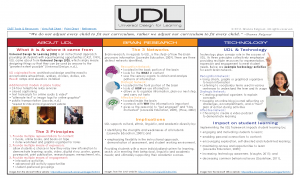Technology in Education
Benefits and Challenges of Games in the Classroom
35Walden University Assignment – Course 6715: Week 6 Discussion
Benefits and Challenges of Games in the Classroom
One of the main benefits of integrating games into the curriculum is that it brings a tool into the classroom in which students are familiar with and enjoy using. Gee (2005) mentions many benefits of GAME PLAY in education, such as students having to follow a set of rules, analyze their options, make decisions, perform tasks, and evaluate the results on whether their decision produced the desired outcome or not. Games also encourage pattern identification, exploration, and provide a reinforced scaffolding approach to learning; taking what they know and have learned and connecting this with new information being introduced. The most interesting insight Gee (2005) spoke about was “just-in-time” and “on demand” learning. Understandably, for any of us, when we have made clear connections, we become open and ready for new information. All students learn at their own speed, and when they reach an intellectual milestone, only then are they able to truly receive new information, process it, and apply it to demonstrate learning. This method of learning focuses on the individual student; actively encouraging them to grasp concepts in a non-threatening manner, then motivating them to move forward as soon as THEY are ready. This creates a more meaningful learning experience that ensures learning is taking place.
GAME DEVELOPMENT has all of the benefits of game play however, it has additional benefits. Creating games focuses on the student as the teacher and teacher as the facilitator, guide or resource. As the teacher, students have a better opportunity to master content because they must first collect, organize, analyze and interpret information; then plan, apply and creatively explain the concept to demonstrate understanding; and finally create a mini-game based on their own understanding of the content which in turn, teaches that concept to someone else; the game player (Overbaugh & Schultz, n.d.), (Prensky, 2008). This process can help students build self-efficacy as they are given more control over their learning, are able to create something that has value to them and their peers, and are recognized and rewarded for their unique ideas and creativity (Prensky, 2008). Other benefits include soft skill building in peer-to-peer and peer-to-teacher communication, collaboration and cooperation.
Challenges to bringing game play and development into the classroom is (1) obtaining buy-in from the administration and parents as the perception society has on games revolves around them either being “a waste of time” or “a negative influence on our youth;” as well as (2) securing resources and support. In addition, (3) other teachers may oppose adopting this method, as Prensky explains (2008) because they have been taught to be, and are most comfortable with being, the authority on information acquisition. Many teachers are afraid to try something out of the realm of their knowledge and experience because they believe they must have all of the answers for their students. However, with educational strategies today focusing on student-centered learning, so should professional development training. Teachers need to be trained on how to assist student growth by working along-side them, guiding them when needed, and learning along with students.
I do believe in using game play and development as learning tools in the classroom. However, the games students play in the classroom need to be evaluated for content and learning goals to ensure their effectiveness. Game development offers higher pedagogical application, engages and motivates students to be active participants in their learning (as games are a regular part of today’s society), and encourages students to take responsibility for their learning. Using game development in my classroom proved to be as much of an enlightening experience for me as it was for my students. My classroom was filled with active and focused energy. Students were excited to find I did not have all of the answers, yet I would work along side them to research or explore a solution. It became a competition to them to be the first to find the answer. When they did, I would take a moment to stop the class, have the student share what they had discovered, then let the student demonstrate/teach me (and other students interested) how to solve the problem presented. I would then have the student create the single-action/event in the game software and upload it to our library resource with their name next to it. When other students needed to know how to perform that action/event, they would download and open the file, then review how the action/event was applied to reverse engineer the action/event for their game.
Shanna Falgoust
References:
Gee, J. P. (2005). Good video games and good learning. Phi Kappa Phi Forum, 85(2), 33–37.
Overbaugh, R. C., & Schultz, L. (n.d.). Bloom’s Taxonomy. Old Dominion University. Retrieved June 8, 2011, from http://www.odu.edu/educ/roverbau/Bloom/blooms_taxonomy.htm
Prensky, M. (2008). Students as designers and creators of educational computer games: Who else? The British Journal of Educational Technology, 39(6), 1004–1019.
Online Learning in K-12 Schools
0Walden University Assignment – Course 6715: Week 4 Application
Differentiating Instruction
0Walden University Assignment – Course 6714: Week 5 Discussion
Direct URL: http://voicethread.com/share/1895901/
Learning to Change-Changing to Learn
0How do we meet the needs of our students in a technology-rich world?
